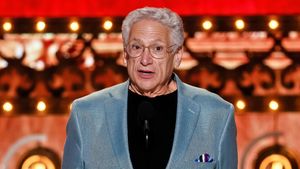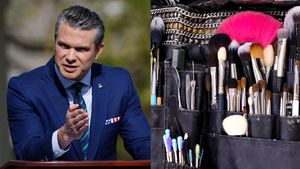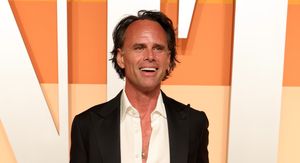Angelina Jolie recently wrote in The New York Times about her decision to have her ovaries and fallopian tubes removed due to a family history of ovarian cancer, which killed her mother at a young age. Two years ago, she wrote about her decision to undergo a double mastectomy when she found out she carried the BRCA1 gene, which placed her at a very high risk of breast cancer.
In her first article, after having the double mastectomy, Jolie wrote, "On a personal note, I do not feel any less of a woman. I feel empowered that I made a strong choice that in no way diminishes my femininity." After undergoing a bilateral salpingo-oophorectomy -- removal of the fallopian tubes and ovaries -- Jolie wrote, "I feel feminine, and grounded in the choices I am making for myself and my family."
It struck me that her sense of self and her gender identity weren't tied to her breasts, or to her reproductive organs. This small observation holds true for everyone, including transgender people.
In some ways, gender is more easily definable by what it is not, than what it is. Gender isn't chromosomes, for starters. There are women, who identify as women, who have an XY karyotype and successfully carried unassisted pregnancies to term.
Gender isn't how you are raised by your parents, or how you were socialized growing up, either. Individuals with 5alpha-Reductase deficiency (5-ARD), a recessive intersex condition, have an XY karyotype and are often born with a normal appearing vagina. These individuals are raised as girls, but usually have a masculine gender identity. Similarly, there's the case of David Reimer, who was raised as a girl after a botched circumcision, but always identified as a man.
Gender identity isn't a delusion, regardless of chromosomes or what body parts a person has, or used to have; it is an intrinsic, deeply held sense of self. Jolie hints at this. The cases above with intersex conditions illustrate this concept, and it holds true for transgender people as well.
A recent study of transgender children found that they identify with their gender every bit as strongly as cisgender (nontrans) children. The most recent comprehensive literature review of studies examining the origins of gender and gender identity concluded, "there is strong support in the literature for a biologic basis of gender identity." Literally hundreds of studies have pointed to potential biological causes of gender identity.
This is similar to what we know of sexual orientation: there appears to be some biological causes, orientation and identity exist on a spectrum, we're not certain of the exact mechanisms that control their formation, and trying to change either doesn't work. The American Psychological Association opposes such efforts for youth, stating, "Attempts to force gender diverse and transgender youth to change their behavior to fit into social norms may traumatize the youth and stifle their development into healthy adults."
Similarly, the American Psychoanalytic Association opposes efforts to change people's sexual orientation or gender identity in the same sentence: "The American Psychoanalytic Association affirms the right of all people to their sexual orientation, gender identity and gender expression without interference or coercive interventions attempting to change sexual orientation, gender identity or gender expression."
After Jolie underwent a double mastectomy, she also had reconstructive surgery. Her breasts were part of her self-image, and while she would not be any less of woman without them, she chose to align her body and how she sees herself. After her salpingo-oophorectomy, she chose to take Hormone Replacement Therapy to maintain a hormonal balance that works for her and to help prevent uterine cancer.
Similarly, many transgender people are attempting to align their bodies with their self-image, and their endocrines with their identity. This too may be accomplished via hormones, surgery, or both. However, this somehow becomes a moral issue to people who should have no say in other people's medical decisions.
We are not defined by the sum of our body parts or their history, though. What defines us as individuals, what makes us unique as individual human beings, is the grey matter between our ears.
Chromosomes, primary, or even secondary sexual characteristics are not fool-proof determinants of gender. Gender identity, self-image, and gender, are all interconnected and very much biologically set by the minds we were given. One can no more ask a transgender person to become cisgender, than ask a cisgender person to become transgender. We are who we say we are. And there's nothing wrong with that.

BRYNN TANNEHILL graduated from the Naval Academy in 1997 before serving as a campaign analyst while deployed overseas. She later worked as a senior defense research scientist in private industry; she left the drilling reserves and began transitioning in 2010. Since then she has written for OutServe, The New Civil Rights Movement, Salon, Everyday Feminism, The Good Men Project, Bilerico, and The Huffington Post.















































































